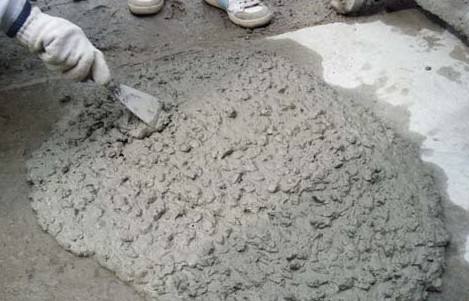(单词翻译:单击)
听力文本
This is Scientific American — 60-Second Science. I'm Christopher Intagliata.
Concrete is one of the most widely used materials on the planet. "And this consumption comes with a heavy ecological price." Rouzbeh Shahsavari, a materials scientist at Rice University. "Around 5 to 10 percent of total CO2 emissions comes from concrete production."
One way to reduce those emissions, he says, would be to increase the strength and toughness of concrete. So you need less of it in construction. But to make something stronger, you need to understand its weaknesses.
So Shahsavari and his team studied the defects in a rock called tobermorite. (TO-ber-MOR-ite) The rock is an analog for wet cement, the main ingredient in concrete. And they found that certain defects in the rock actually made the rock tougher, if they were aligned in a specific configuration. Sounds counterintuitive: Defects a good thing?

"Defects are typically considered a bad feature of material. But when it comes to complex systems, like cement or concrete, it's not the case. It may actually be an opportunity to introduce toughness, or get something better out of it." The study is in the journal ACS Applied Materials and Interfaces.
Next step, Shahsavari says, would be to optimize concrete recipes—to use these defects in their favor. Play with manufacturing temperatures, or alter the ratios of impurities in the mix. "Since we're using it pretty much in every building, every bridge, every highway in all parts of the world, even a slight impact in the performance could have a huge consequence in terms of energy consumption, CO2 footprint, and all those things." And take a little concrete out of the concrete jungle.
Thanks for listening for Scientific American — 60-Second Science Science. I'm Christopher Intagliata.
参考译文
这里是科学美国人——60秒科学。我是克里斯托弗·因塔利亚塔。
混凝土是世界上使用最广泛的材料之一。“这种消费模式产生了沉重的生态代价”。鲁兹贝赫·沙萨瓦里是莱斯大学的材料科学家。“二氧化碳排放量中有大约5%至10%来自混凝土生产过程。”
他表示,减少排放量的其中一种方法是增加混凝土的强度和韧性。这样在建设中混凝土的使用量就会减少。但是,要让混凝土变得更强韧,就要先了解混凝土的缺陷。
所以,沙萨瓦里是和他的团队研究了雪硅钙石这种岩石的不足之处。这种岩石可以模拟湿水泥,而湿水泥是混凝土的主要成分。他们发现,如果按照特定结构进行排列,那这种岩石的一些缺陷实际上使这种岩石更加坚韧。这听起来似乎有悖于常理:缺陷反而成为了一件好事?
“缺陷通常被认为是材料不好的特征。但当涉及到水泥或混凝土等复杂系统时,情况却并非如此。实际上,这可能是增强韧性或是得到更多好东西的机会。”该研究结果发表在美国化学学会《美国化学会-应用材料与界面期刊上。
沙萨瓦里表示,下一步是优化混凝土的组成,把这些缺陷变为益处。可以改变制造温度或杂质的混合比例。“因为我们几乎在世界各地的每座建筑、每坐桥梁、每条公路上都使用混凝土,即使对其性能进行微小的改变就可能对能源消耗、二氧化碳足迹等产生重大的影响。”同时,这也会减少混凝土的使用量。
谢谢大家收听科学美国人——60秒科学。我是克里斯托弗·因塔利亚塔。
译文为可可英语翻译,未经授权请勿转载!
重点讲解
重点讲解:
1. come from 来自;始于;
例句:The news comes from a reliable source.
这消息来自可靠的来源。
2. when it comes to 谈到;涉及;
例句:When it comes to the point, she always shrinks back.
每逢到了紧要关头,她总是临阵退缩。
3. in one's favor 对…有利;
例句:He manipulated public opinion in his favor.
他巧妙地使公众舆论倒向他。
4. in terms of 在…方面;从…角度看;根据…来说;
例句:The book is well organized in terms of plot.
这本书的故事布局十分严谨。


